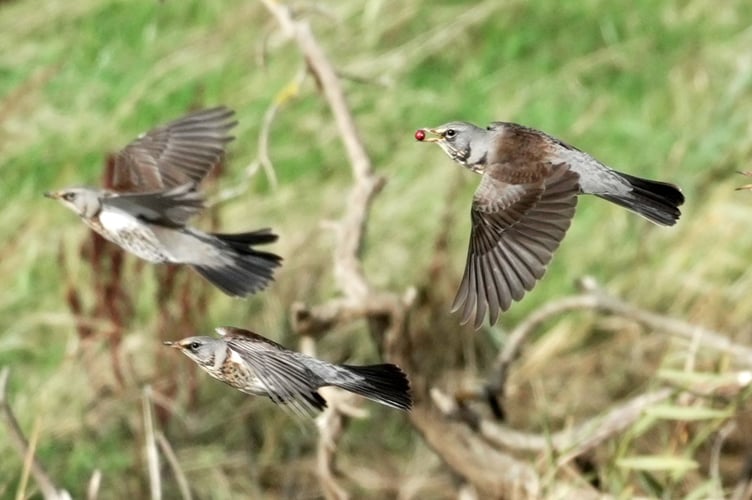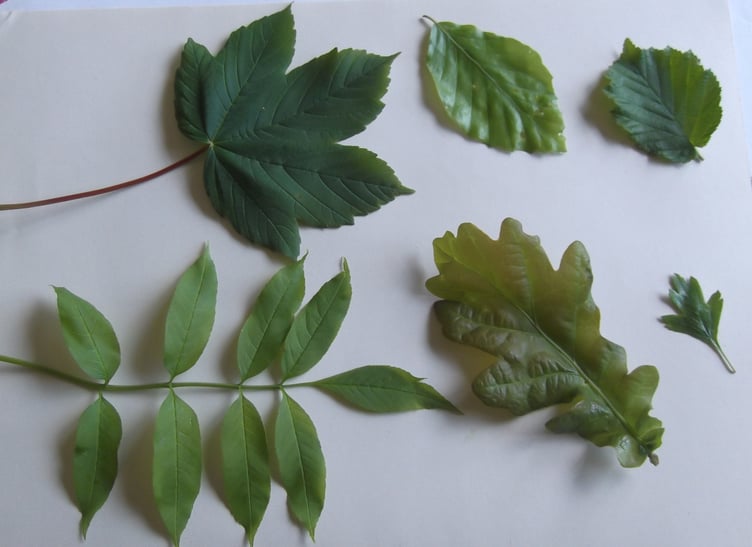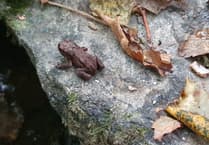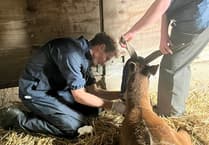Are you good at naming trees? Here is a photo of 6 tree leaves. In alphabetical order they are Ash, Beech, Hawthorn, Hazel, Oak and Sycamore. I have added another photo of their fruits. See if you can name the six and match the leaves to the fruits. Start at the top left and move clockwise around the six. Answers given next week!

The Ash is slow to burst into leaf in Spring and one of the first to lose its leaves in Autumn. The fruits hang in bunches, like bunches of keys – ‘ash keys’. These are spread by wind catching the flat, slightly twisted ‘keys’. Ashes are affected by Ash die-back disease but many survive. Remember, dead wood on or under our trees is important for hundreds of organisms. The black knobs you see on dead branches are the fruiting bodies of King Alfred’s Cakes (also called Rheumatism Knobs). It is a fungus which only grows on dead ash wood. An Ash challenge: find an ash twig and look for the buds. What colour are they? Are they in pairs, opposite each other, or singly, on alternate sides?
Beech makes very good hedges, with some of the dead leaves staying on through the winter. Their fruits are often called ‘beech mast’. The seeds are housed in prickly cases that split open as they mature, revealing the shiny, tasty seeds. They are spread by animals picking them up to eat. They attract mice, voles and birds. Flocks of Chaffinches seem especially attracted to beech mast. The Beech challenge is to find a twig. Are the buds fat and round or long and thin? Are they opposite each other or alternate along the twig?
Hawthorn bushes have red berries for their fruit. The seeds are spread by fruit-eating birds, especially Redwings and Fieldfares. These birds arrive now, in November, from frosty Scandinavia to find more food. The Redwings are small thrushes and have handsome, cream eye-stripes. The Fieldfares are larger thrushes; they have smart grey heads and a chuckling call. Lloyd Gray took this amazing in-flight photograph; one has a hawthorn berry in its beak. Blackbirds also love Hawthorn berries. The Hawthorn challenge is to spend ten minutes looking at a Hawthorn bush with lots of berries on it and see what birds arrive.

Hazel bushes produce nuts. Squirrels and lots of small mammals enjoy opening Hazel nuts and eating the round, crunchy seed inside. If you see fragments of broken nuts under a Hazel bush, a Squirrel has been eating them. If
you find the nut not broken but with a neatly nibbled hole, the nut inside has been eaten by a mouse, Elaine Hurrell and her father H.G. discovered that Dormice produce a halo of curved scratches around the hole and used this to make a nationwide survey of our Dormice. It is sometimes called the Hazel Dormouse, because it likes Hazel nuts. The Hazel challenges are 1 - to find the male catkins on the twigs nearly ready to open; they are sometimes called ‘lambs’ tails’, and 2 - to make a collection of hazel nut remains eaten by squirrels and mice.
Of course Oak fruits are called acorns. One of the acorns in the photo has a funny brown lump growing on the side of it. This is a Knopper Gall. Its parent was a very small gall-wasp which, last Spring, laid an egg on the oak blossom. The chemical messages laid with it instructed the Oak tree to grow a knobbly lump around the egg to protect it and to provide it food. It has been a great year for acorns. Lots of them just roll away from their parent tree but many are spread by Jays. They collect hundreds of acorns, eat some but bury most of them in grassy fields and gardens. Some they will remember and later eat but most they forget, leaving them to grow into Oak trees. The Oak tree challenge is to find a twig. Are the buds fat and round or long and thin? Are they opposite each other in pairs?
Lastly is the Sycamore, whose fruits are sometimes called ‘helicopters’, and are spread by the wind. Its leaves open early in Spring and can be lovely shades of red before they turn green. It is in the Maple family, whose sap is often very sweet. Squirrels like nibbling the bark to taste the sugary sap. The Sycamore challenges are: What colour are its buds? Are the buds in pairs, opposite each other, or alternate? Finally, throw a helicopter into the air and see what happens!
I hope you and your friends enjoy the challenges.






Comments
This article has no comments yet. Be the first to leave a comment.